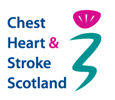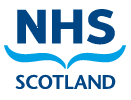Physiological effects of fight/flight response
These physical changes allow our body and mind to either fight or run away. The reasons for some of these changes are given below:
- View text alternative
-
-
The heart beats faster:
This helps take blood to where it is needed most, e.g. to the muscles in our legs to help us run faster. There is no danger that you will you have a heart attack during such an episode of anxiety. Think of the heart as a muscle which is being exercised. -
Breathing quickens and deepens:
This helps oxygen be carried to the lungs, arms and legs via the bloodstream. Side effects may be chest pain, breathlessness, a choking feeling, or blurred vision. Although you may feel dizzy you will not faint. To faint, your blood pressure has to drop. When we are anxious, because our hearts beats faster, our blood pressure is temporarily raised. -
Muscles tense:
To make sure we can stand and fight or run away, the muscles tense, ready for action. If the fight or flight response continues, after a while this may cause pain, stiffness or shaking as fatigue sets in. -
Sweating increases:
Sweating helps cool the muscles to stop the body from overheating. -
Bowels and bladder move:
In preparing to fight danger, the bowels loosen and there is an urge to empty the bladder. This puts us in better shape to fight or run away.
-
When this chain of events occurs in a normal situation, for example if we are pushing a trolley in the supermarket or sitting in a meeting, it can be very frightening. The important thing to remember is that the physical symptoms of anxiety are natural and not harmful. They can however be an extremely unpleasant experience.




